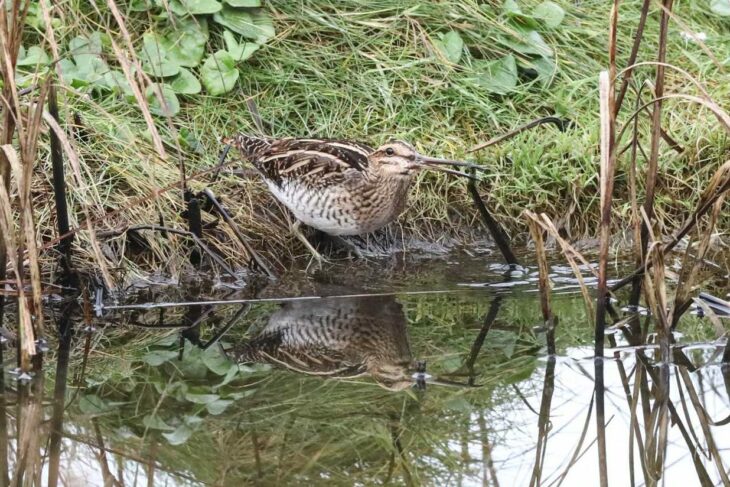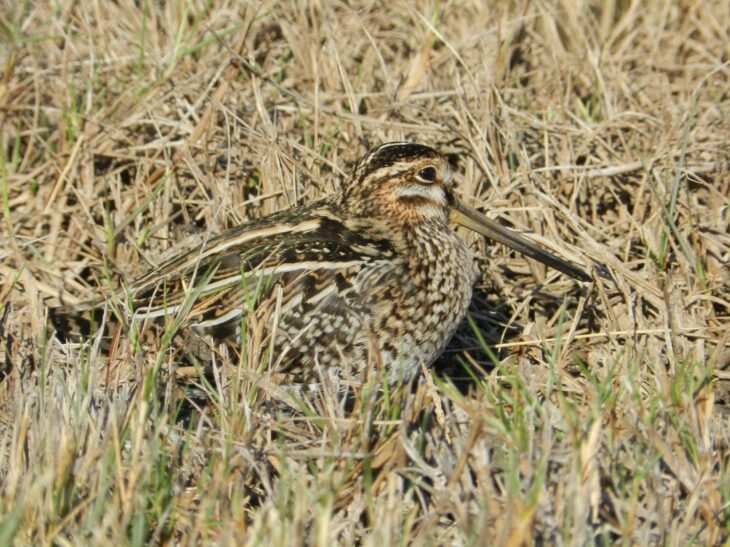Snipe Spotting
Snipe are medium-sized wading birds that are part of the family Scolopacidae. They inhabit wet grassland areas, preferring boggy or muddy ground. You’ll often find them in small groups. They are often very well camouflaged amongst grass and reeds – they prefer cover, but when seen in the open they can be easily recognised by their distinctive stripes and disproportionately long, straight bill, (a specially adapted bill that enables them to efficiently grasp and consume small creatures). Their bill also has a flexible tip which is full of nerves: they can feel for worms deep underground and open the end of their beak to grab them. They have a rather dumpy shape and short legs and are usually in a sort of crouching posture. They eat things such as worms, insects, crustaceans, molluscs, and small amphibians without stopping to remove its bill from the mud; the common snipe also eats berries, seeds and plant fibres.

Snipe will fly fast when disturbed, and unlike most waders, they don’t normally associate with other species. You’ll mostly see them in small groups but they feed a little apart. We see a lot of common snipe from the visitor centre, so if you’re ever visiting us and wanting to see snipe, the best place to see them would be in the salt pans. You’ll see them lurking about in the reeds, although if it is a very cold day and the ground is hard, the snipe will go closer to the shore where the ground is softer for them to feed. You can see them at both high and low tide, more so in the reeds or close to the shore around a muddy puddle. Snipe can be seen all year round but during breeding season the best place to look is on moorland, especially on early spring mornings when males can be heard giving their ‘drumming’ or ‘bleating’ display. In winter, look patiently around the edges of pools in well-vegetated wetlands.

This time last year we also saw some jack snipe! Compared to common snipe, jack snipe are smaller with a shorter bill. The top of their head is all dark, lacking the golden crown stripe. Also, the pale band above the eye is split in two by a thick dark line, which looks a little bit like an eyebrow. Their bouncing feeding action is also done more by the jack snipe. If you’re ever in the visitor centre then keep your eye open for both common and jack snipe, we’ll hopefully get lucky and get to see some this year too!
Lauren McDougall
Visitor Centre Assistant
Help protect Scotland’s wildlife
Our work to save Scotland’s wildlife is made possible thanks to the generosity of our members and supporters.
Join today from just £3 a month to help protect the species you love.
Preface
Snipe are medium-sized wading birds that are part of the family Scolopacidae. They inhabit wet grassland areas, preferring boggy or muddy ground. You’ll often find them in small groups. They …
